What did human communities look like 20,000 years ago?
Much of the evidence of past human activities has perished over time – which is why the work of Dr Lisa Maher, at the University of California, and Dr Danielle Macdonald, at the University of Tulsa, in the US, is extremely important. Using artefacts left by humans living 20,000 years ago, they are giving us an insight into how one of the earliest societies lived
TALK LIKE AN ARCHAEOLOGIST
ARCHAEOLOGY – the study of past human activity through excavation and analysis of material artefacts and their associated contexts
ARTEFACT – an object made by humans at a certain point in time, which indicates how they lived and interacted
AUROCH – a form of cattle
EPIPALAEOLITHIC – a prehistoric period occurring during the Old Stone Age, 20,000-10,000 years ago, when humans existed as hunter-gatherers
EQUID – an animal of the horse family
FAUNA – the animal life present in a region or time
HUNTER-GATHERER – a human lifestyle where food is obtained primarily through foraging, fishing and hunting
JORDAN – a country in Western Asia
KHARANEH IV – an archaeological site in Jordan, containing evidence of human activity in the Epipalaeolithic
LITHIC – a chipped stone tool and its associated debris, often used for hunting, scraping and cutting
NEOLITHIC – the period directly after the Epipalaeolithic, 10,000-4,500 years ago, when modern humans began farming practices and domestication of animals
MATERIAL CULTURE – items made and used by humans in the past and present that can represent how people live, including their worldviews
SEDENTISM – living in one place for a long period of time (as opposed to being nomadic)
Life was very different for human societies 20,000 years ago. Humans hunted animals for food and had just started living in settlements. Unfortunately, very little evidence from this period exists. Archaeologists rely on the artefacts found from these times, such as stone tools, animal bones and human remains, as well as the contexts within which these artefacts were made, used and discarded (or lost), to reconstruct the past.
These items often concentrate in prehistoric sites where humans spent time; the longer they spent there, the greater the quantity and diversity of material cultural that can be found. One such site, Kharaneh IV in eastern Jordan, has been studied by archaeologists Dr Lisa Maher and Dr Danielle Macdonald, at the universities of California and Tulsa, where they discovered multiple 20,000-year-old hut structures alongside other archaeological remains. Their studies indicate this area was intensively occupied by hunter-gatherers, who were responsible for the birth of architecture in the region.
A REVEALING SITE
Today, Kharaneh IV is situated in a barren desert. However, during the last Ice Age, eastern Jordan was populated with rivers and wetlands, creating a perfect environment for hunter-gatherers to settle in. Large numbers of people congregated here for prolonged periods of time. This attachment to location, and introduction of social networks within Kharaneh IV and connecting it to other nearby sites, is normally associated with cultures living thousands of years later.
For this reason, Kharaneh IV is the densest and largest Epipalaeolithic open-air site in the region. Over 4 million lithics have been excavated over the last 15 years and animal remains have been extracted in similar numbers. Lisa and Danielle have collected over 4,000 marine shells, brought to the site from the Red and Mediterranean seas, over 250 km away. “The team has even recovered rarer items, such as bones with regularly incised lines and a fragment of limestone with geometric carved patterns,” says Lisa. This points to complex interweaving of social, symbolic and ideological behaviours with everyday activities at the site.
EXCAVATION AT KHARANEH IV
Lisa and Danielle’s team start work as soon as the sun rises, around 4:45 am, excavating during the cooler morning. In the afternoon, when temperatures exceed 40 °C, lab work takes place. Ancient plant remains are separated from other artefacts using a water flotation system. Artefacts are also washed, sorted and analysed.
The most common artefacts found by the team are small, blade-like and trapezoid-shaped microliths, a type of stone tool. Comparing microscopic traces on lithics to archaeological tools, Danielle and Lisa think these were used by communities in the Epipalaeolithic for a variety of tasks, such as hunting, whittling wood and butchering animals. The lithics changed shape during the time the site was occupied, as more of the landscape was explored and new materials became available. “This allowed them to use more aesthetically beautiful raw materials, like purple and pink cherts,” explains Danielle.
Faunal data also shows what the occupants of Kharaneh IV were eating. Evidence of aurochs, equids, foxes, birds and tortoises was found, but around 90% of the faunal assemblage is composed of gazelle bones. Faunal specialists working with Lisa and Danielle can tell how animals were cooked by their findings. “There is evidence people were smoking and drying meat in the later phase of occupation,” says specialist Anna Spyrou. Evidence was found of fire pits surrounded by small post holes, too small for an architectural structure. “We interpret these to be the remains of drying racks, where strips of meat would have been hung to smoke over the fire,” she adds.
THE IMPORTANCE OF ARCHITECTURE
Lisa and Danielle have fully excavated two hut structures, about 2-3 metres in dimension, with foundations dug into the ground. The walls and roof were made of brush and thatch over wooden frames, with earthen floors covered in grass and reed mats. After the huts were abandoned, they were burned and their remains sealed in sand. It appears this was intentional, as burnt piles of gazelle horn cores, clumps of red ochre pigments, and hundreds of marine shells were found inside.
The team can identify if the burning was intentional by the footprint the fire leaves. Burning is normally confined to the boundaries of the structure, with other features outside this area remaining unaffected. The intentional burning of structures appears to be a pattern throughout Kharaneh IV. The two structures display a similar sequence of construction, use and destruction. There is also evidence of human remains inside one of the huts. “As far as we are aware, this is the first known instance of the dead being placed within a structure that was intentionally burned,” says Lisa.
How humans treated their deceased relatives is hard to study, as the evidence of burnt structures with human remains inside is uncommon. “We know the woman found in the hut was intentionally placed there shortly after her death,” Danielle explains. “Analysis by human osteologists Jay Stock and Emma Pomeroy conclude that the completeness of the skeleton indicates she was placed on the floor prior to decomposition, where she was wrapped in a covering or buried in sand, dampening the effect of the fire.” It appears the fire burned fast and hot, consuming the organic framework, but only partially cremating her remains.
This displays an early link between architecture and burial of the dead. Lisa and Danielle believe the woman may have been cremated in the structure because it belonged to her or was no longer habitable to anyone in the community. This ceremony connects the life history of a person to the life history of a building. “It may be that the burning of these structures was commemorative, marking both death and transformation, and a fresh start for the living,” says Danielle.
HUMAN SOCIETIES
“The more we look, the earlier we find evidence for the complex social, technological, economic and ideological lives of past peoples,” Lisa explains. Features traditionally used to define the Neolithic – domestication, elaborate art, sedentism, long-distance exchange networks – are appearing earlier in the prehistoric record. Rather than a rapid Neolithic ‘revolution’, it seems there was an extended transition from the Epipalaeolithic to Neolithic.
Instances of hunter-gatherers building structures, creating communities, and burying their dead are still rare in the Epipalaeolithic. “Many of the burial practices we see hint at practices that become more common during the Neolithic,” explains Lisa. “But, we may find these exist even earlier if we continue to excavate these sites.”
WHAT IS NEXT?
Although many artefacts have been collected from Kharaneh IV, this only represents about 0.05% of the total present at the site. Lisa and Danielle still have a new hut structure to excavate and they want to answer questions relating to the shift towards more communal living at later stages, and how this relates to the major climate changes documented in the region.
Using their marine shell and lithic knowledge, they also want to understand how far networks stretched. They are studying sites in the surrounding regions, such as Azraq, as well as those further afield in Cyprus, to understand the extent of hunter-gatherer movement before agricultural village life. “We are definitely interested in continuing working at the site, especially with an incredible international team of specialists and well-trained, bright students,” says Lisa.
Reference
https://doi.org/10.33424/FUTURUM251
ARCHAEOLOGY – the study of past human activity through excavation and analysis of material artefacts and their associated contexts
ARTEFACT – an object made by humans at a certain point in time, which indicates how they lived and interacted
AUROCH – a form of cattle
EPIPALAEOLITHIC – a prehistoric period occurring during the Old Stone Age, 20,000-10,000 years ago, when humans existed as hunter-gatherers
EQUID – an animal of the horse family
FAUNA – the animal life present in a region or time
HUNTER-GATHERER – a human lifestyle where food is obtained primarily through foraging, fishing and hunting
JORDAN – a country in Western Asia
KHARANEH IV – an archaeological site in Jordan, containing evidence of human activity in the Epipalaeolithic
LITHIC – a chipped stone tool and its associated debris, often used for hunting, scraping and cutting
NEOLITHIC – the period directly after the Epipalaeolithic, 10,000-4,500 years ago, when modern humans began farming practices and domestication of animals
MATERIAL CULTURE – items made and used by humans in the past and present that can represent how people live, including their worldviews
SEDENTISM – living in one place for a long period of time (as opposed to being nomadic)
Life was very different for human societies 20,000 years ago. Humans hunted animals for food and had just started living in settlements. Unfortunately, very little evidence from this period exists. Archaeologists rely on the artefacts found from these times, such as stone tools, animal bones and human remains, as well as the contexts within which these artefacts were made, used and discarded (or lost), to reconstruct the past.
These items often concentrate in prehistoric sites where humans spent time; the longer they spent there, the greater the quantity and diversity of material cultural that can be found. One such site, Kharaneh IV in eastern Jordan, has been studied by archaeologists Dr Lisa Maher and Dr Danielle Macdonald, at the universities of California and Tulsa, where they discovered multiple 20,000-year-old hut structures alongside other archaeological remains. Their studies indicate this area was intensively occupied by hunter-gatherers, who were responsible for the birth of architecture in the region.
A REVEALING SITE
Today, Kharaneh IV is situated in a barren desert. However, during the last Ice Age, eastern Jordan was populated with rivers and wetlands, creating a perfect environment for hunter-gatherers to settle in. Large numbers of people congregated here for prolonged periods of time. This attachment to location, and introduction of social networks within Kharaneh IV and connecting it to other nearby sites, is normally associated with cultures living thousands of years later.
For this reason, Kharaneh IV is the densest and largest Epipalaeolithic open-air site in the region. Over 4 million lithics have been excavated over the last 15 years and animal remains have been extracted in similar numbers. Lisa and Danielle have collected over 4,000 marine shells, brought to the site from the Red and Mediterranean seas, over 250 km away. “The team has even recovered rarer items, such as bones with regularly incised lines and a fragment of limestone with geometric carved patterns,” says Lisa. This points to complex interweaving of social, symbolic and ideological behaviours with everyday activities at the site.
EXCAVATION AT KHARANEH IV
Lisa and Danielle’s team start work as soon as the sun rises, around 4:45 am, excavating during the cooler morning. In the afternoon, when temperatures exceed 40 °C, lab work takes place. Ancient plant remains are separated from other artefacts using a water flotation system. Artefacts are also washed, sorted and analysed.
The most common artefacts found by the team are small, blade-like and trapezoid-shaped microliths, a type of stone tool. Comparing microscopic traces on lithics to archaeological tools, Danielle and Lisa think these were used by communities in the Epipalaeolithic for a variety of tasks, such as hunting, whittling wood and butchering animals. The lithics changed shape during the time the site was occupied, as more of the landscape was explored and new materials became available. “This allowed them to use more aesthetically beautiful raw materials, like purple and pink cherts,” explains Danielle.
Faunal data also shows what the occupants of Kharaneh IV were eating. Evidence of aurochs, equids, foxes, birds and tortoises was found, but around 90% of the faunal assemblage is composed of gazelle bones. Faunal specialists working with Lisa and Danielle can tell how animals were cooked by their findings. “There is evidence people were smoking and drying meat in the later phase of occupation,” says specialist Anna Spyrou. Evidence was found of fire pits surrounded by small post holes, too small for an architectural structure. “We interpret these to be the remains of drying racks, where strips of meat would have been hung to smoke over the fire,” she adds.
THE IMPORTANCE OF ARCHITECTURE
Lisa and Danielle have fully excavated two hut structures, about 2-3 metres in dimension, with foundations dug into the ground. The walls and roof were made of brush and thatch over wooden frames, with earthen floors covered in grass and reed mats. After the huts were abandoned, they were burned and their remains sealed in sand. It appears this was intentional, as burnt piles of gazelle horn cores, clumps of red ochre pigments, and hundreds of marine shells were found inside.
The team can identify if the burning was intentional by the footprint the fire leaves. Burning is normally confined to the boundaries of the structure, with other features outside this area remaining unaffected. The intentional burning of structures appears to be a pattern throughout Kharaneh IV. The two structures display a similar sequence of construction, use and destruction. There is also evidence of human remains inside one of the huts. “As far as we are aware, this is the first known instance of the dead being placed within a structure that was intentionally burned,” says Lisa.
How humans treated their deceased relatives is hard to study, as the evidence of burnt structures with human remains inside is uncommon. “We know the woman found in the hut was intentionally placed there shortly after her death,” Danielle explains. “Analysis by human osteologists Jay Stock and Emma Pomeroy conclude that the completeness of the skeleton indicates she was placed on the floor prior to decomposition, where she was wrapped in a covering or buried in sand, dampening the effect of the fire.” It appears the fire burned fast and hot, consuming the organic framework, but only partially cremating her remains.
This displays an early link between architecture and burial of the dead. Lisa and Danielle believe the woman may have been cremated in the structure because it belonged to her or was no longer habitable to anyone in the community. This ceremony connects the life history of a person to the life history of a building. “It may be that the burning of these structures was commemorative, marking both death and transformation, and a fresh start for the living,” says Danielle.
HUMAN SOCIETIES
“The more we look, the earlier we find evidence for the complex social, technological, economic and ideological lives of past peoples,” Lisa explains. Features traditionally used to define the Neolithic – domestication, elaborate art, sedentism, long-distance exchange networks – are appearing earlier in the prehistoric record. Rather than a rapid Neolithic ‘revolution’, it seems there was an extended transition from the Epipalaeolithic to Neolithic.
Instances of hunter-gatherers building structures, creating communities, and burying their dead are still rare in the Epipalaeolithic. “Many of the burial practices we see hint at practices that become more common during the Neolithic,” explains Lisa. “But, we may find these exist even earlier if we continue to excavate these sites.”
WHAT IS NEXT?
Although many artefacts have been collected from Kharaneh IV, this only represents about 0.05% of the total present at the site. Lisa and Danielle still have a new hut structure to excavate and they want to answer questions relating to the shift towards more communal living at later stages, and how this relates to the major climate changes documented in the region.
Using their marine shell and lithic knowledge, they also want to understand how far networks stretched. They are studying sites in the surrounding regions, such as Azraq, as well as those further afield in Cyprus, to understand the extent of hunter-gatherer movement before agricultural village life. “We are definitely interested in continuing working at the site, especially with an incredible international team of specialists and well-trained, bright students,” says Lisa.
 DR LISA MAHER
DR LISA MAHER
University of California, Berkeley, US
FIELDS OF RESEARCH: Prehistoric Archaeology and Geoarchaeology
FUNDERS: National Science Foundation, National Endowment for the Humanities, Social Sciences and Research Council of Canada, National Geographic Society, Wenner-Gren Foundation, Arts and Humanities Research Council of Britain, Council for British Research in the Levant, American Center for Overseas Research, Hellman Fund, University of California, Berkeley
DR DANIELLE MACDONALD
University of Tulsa, US
FIELDS OF RESEARCH: Prehistoric Archaeology and Anthropological Archaeology
FUNDERS: National Science Foundation, National Endowment for the Humanities, Arts and Humanities Research Council of the UK (AHRC UKRI), The University of Tulsa
JOINT RESEARCH PROJECT: Investigating how early hunter-gatherer communities lived and interacted, through analysis of artefacts from the Kharaneh IV site in eastern Jordan
 DR LISA MAHER
DR LISA MAHER
University of California, Berkeley, US
FIELDS OF RESEARCH: Prehistoric Archaeology and Geoarchaeology
FUNDERS: National Science Foundation, National Endowment for the Humanities, Social Sciences and Research Council of Canada, National Geographic Society, Wenner-Gren Foundation, Arts and Humanities Research Council of Britain, Council for British Research in the Levant, American Center for Overseas Research, Hellman Fund, University of California, Berkeley
DR DANIELLE MACDONALD
University of Tulsa, US
FIELDS OF RESEARCH: Prehistoric Archaeology and Anthropological Archaeology
FUNDERS: National Science Foundation, National Endowment for the Humanities, Arts and Humanities Research Council of the UK (AHRC UKRI), The University of Tulsa
JOINT RESEARCH PROJECT: Investigating how early hunter-gatherer communities lived and interacted, through analysis of artefacts from the Kharaneh IV site in eastern Jordan
ABOUT PREHISTORIC ARCHAEOLOGY
Prehistoric archaeology is the study of the human past, before historical records began, and allows us to connect with those who lived in a completely different time and place. “The experience of uncovering something that has not been seen or thought about for thousands of years is exciting,” says Lisa. We rely on material remains and belongings to understand how people lived in the past. “It’s a giant puzzle that has no right answer; our understanding changes every time we collect new data, or use a new theory to interpret the past,” says Danielle.
Lisa and Danielle agree that working with local communities is an important part of archaeology. The experience of returning to the same villages every year gives a different experience from that of a tourist and provides a reminder of the diversity of people around the world. “These places become a second home; you become part of a new community,” says Lisa. “The connections built with the past and present are invaluable.”
Danielle highlights the importance of working alongside a team of international archaeologists. “It’s a rare chance to be with a community of people who have a similar love of the ancient past,” she says. However, being away from home for months at a time presents a challenge. Although Lisa’s partner is also an archaeologist, she now has a young family, which means travel is more limited in scope and duration. Danielle also experiences this problem but says this is easier now their dig house has an internet connection.
EXPLORE A CAREER IN PREHISTORIC ARCHAEOLOGY
• There are national organisations, with information and resources for students who are interested in learning more about the past. These include the Society for American Archaeology and the American Anthropological Association.
• The University of Tulsa runs a programme called the Tulsa Undergraduate Research Challenge (TURC): Junior Program. This brings high school students into the lab during summer, where they work alongside faculty and graduate students to help with data collection and analysis.
PATHWAY FROM SCHOOL TO PREHISTORIC ARCHAEOLOGY
• Archaeology and anthropology encompass a wide range of disciplines. To do a degree in either, a foundation in history or sociology is a good start. These will teach you to engage with human cultural diversity through different lenses.
• Lisa highlights geology as a good foundation. “Geography allows you to connect geographic information systems (GIS) and remote sensing with archaeology, and biology is good if you want to go into biological anthropology,” she adds. Other useful subjects include sciences, maths and English.
• You can combine archaeology with other courses at university. For example, psychology can address questions about the evolution of modern human behaviour.
MEET LISA
I have always been interested in the past and puzzling over what the material traces of past people can tell us about their lives. As a high school student, I had a history teacher who thought that everyone should become an archaeologist. His classes were so engaging and my hand would ache after each class from taking notes!
I completed my degree at Lakehead University, in northern Ontario, and dug for the first time on the west coast of Canada. I finished my PhD at the University of Toronto, where I experienced fieldwork in Jordan for the first time and was hooked. After a postdoc and research position at the University of Cambridge, I joined the Anthropology Department at Berkeley as an environmental archaeologist. Focusing on reconstructing human-environment dynamics, I have been running archaeological projects in Jordan for over twenty years. I have also worked in many other countries throughout the world, and recently broadened my horizons to explore island archaeology and the arrival of humans in Cyprus and Hawaii.
As an undergraduate student, I was often the only woman in my geology classes, and the only one combining archaeology and Earth sciences. I am committed to diversity in the archaeological sciences and hope to promote opportunities for women and other underrepresented groups on campus and in the various places where I conduct field research. In Jordan, archaeology is an underrepresented and underpaid profession. We want to contribute to training future generations of Jordanian archaeological scientists, for whom professional training opportunities are traditionally limited. Being a female professional archaeologist in Jordan is a challenging career path.
I love what I do because prehistoric archaeology matters in today’s world! There are important lessons to be learned from how we interacted in the past. Humans have a complicated and branching evolutionary and social history. If I have learned anything from recent global events and ongoing social movements, it is that the past has much to tell us and teach us. Knowledge about the past is enlightening; it provides a way forward, a way to connect people, initiate conversations, and provide tools for change today and moving forward.
MEET DANIELLE
I always wanted to become an archaeologist! I grew up in Toronto, Canada, and my parents would take me to the Royal Ontario Museum. I was fascinated by the Egyptian collections, the mummies and the dinosaurs. I knew that I wanted to study the past and enrolled in archaeology courses once I started my undergraduate degree.
Both my aunt and uncle were anthropologists, so I grew up with anthropology around me. They taught at two different colleges in Chicago – my aunt was a cultural anthropologist and my uncle a biological anthropologist. Seeing adults with careers as anthropologists made me realise that I could be one too.
The most important attributes that have guided me through my journey as an archaeologist are curiosity and the desire to learn. Wanting to explore and discover new things keeps me focused and inspired to do research. Archaeology is a process of discovery, and when we learn about the past, we also discover new things about the present, gaining a better understanding of our own relationship with material culture and the world around us.
Spending time away from work is so important! Sometimes, you need some space away from a problem to see it more clearly, or to understand the bigger picture. To switch off, I like to go hiking with my dogs (one of which I adopted from Jordan) and spend time with friends.
LISA AND DANIELLE’S TOP TIP
Be curious and proactive. While you are in school, reach out to your local archaeological society and attend lectures, workshops and dig schools. When you go to university, contact professors and ask if they have any volunteer opportunities in their lab. You will be surprised how many professors are thrilled with having an extra set of hands to help with analysis!
Do you have a question for Lisa or Danielle?
Write it in the comments box below and Lisa or Danielle will get back to you. (Remember, researchers are very busy people, so you may have to wait a few days.)

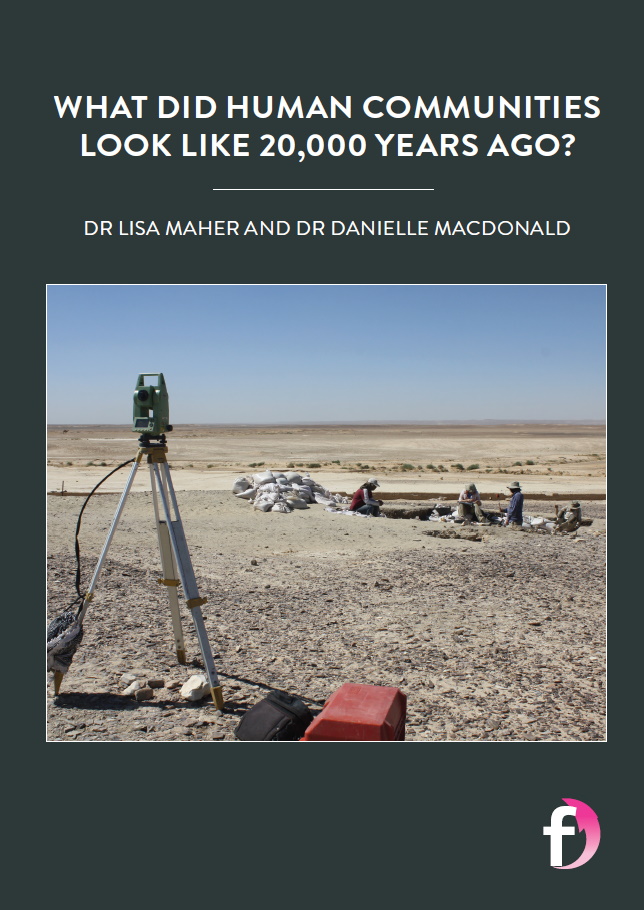
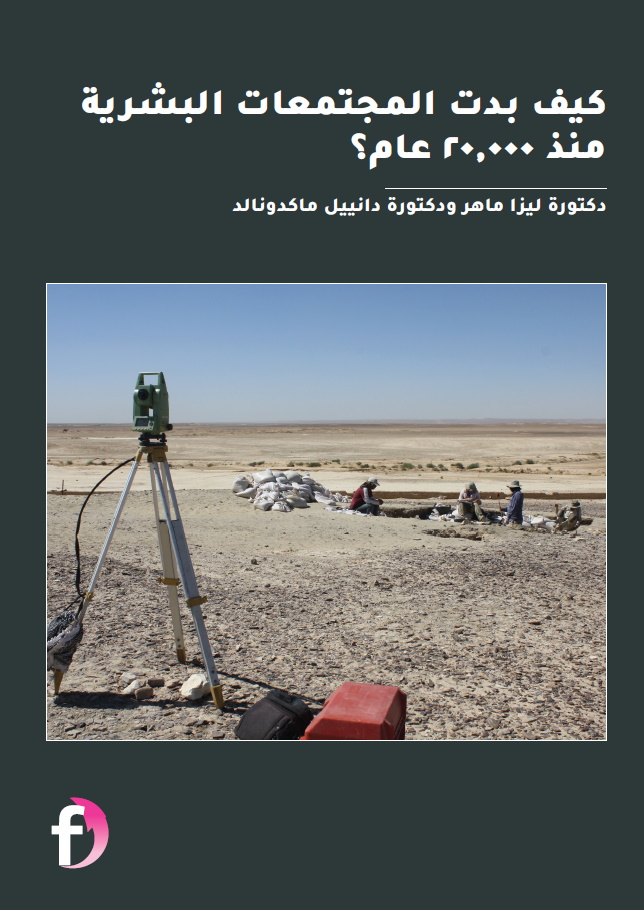
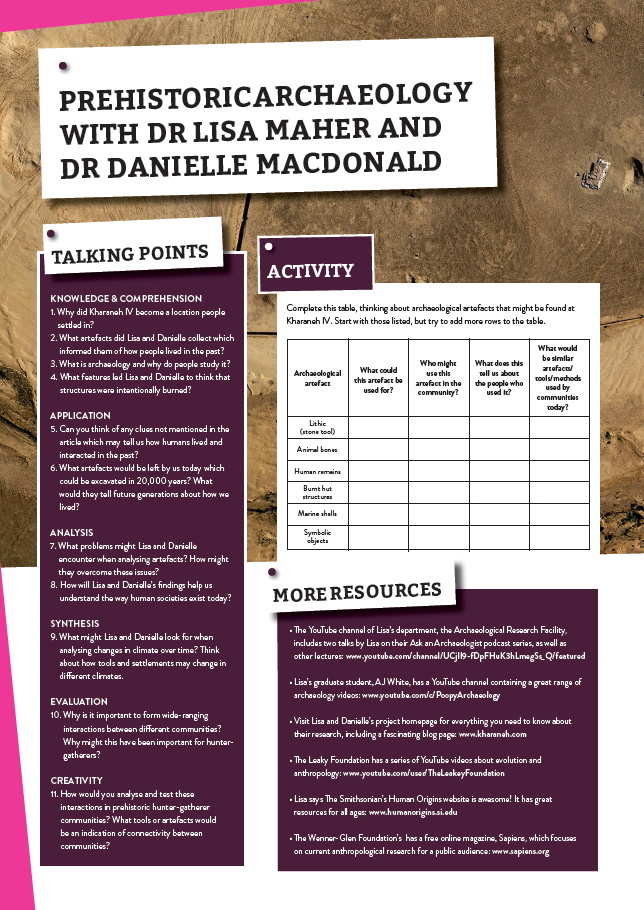

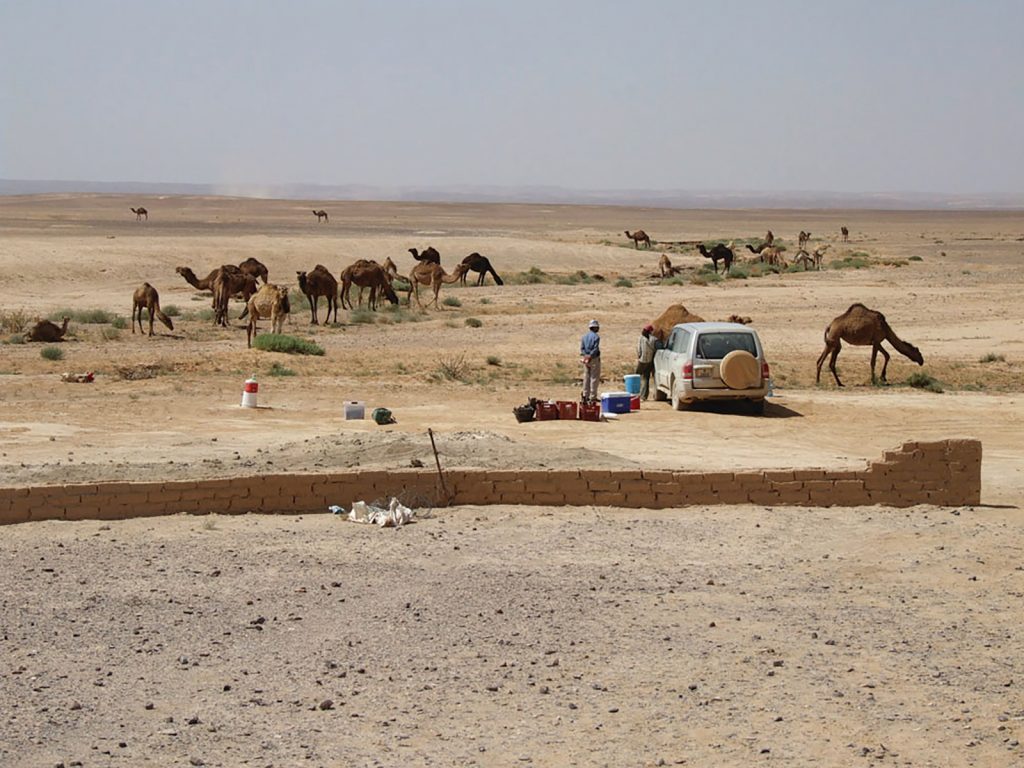
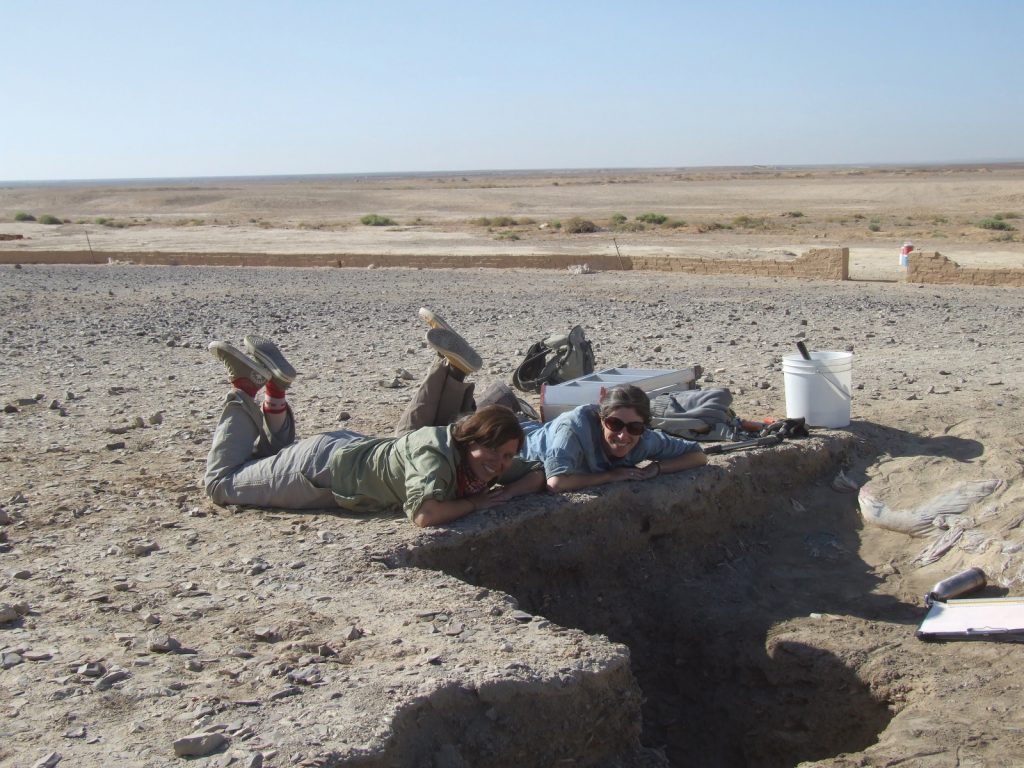

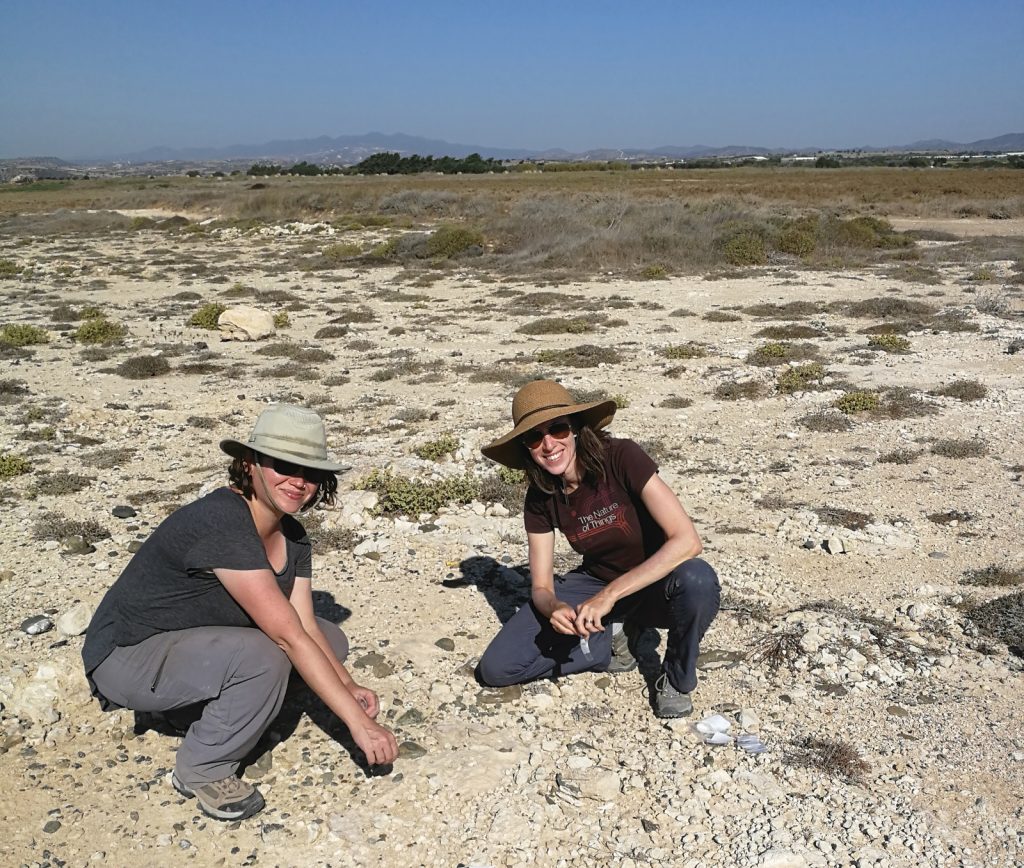

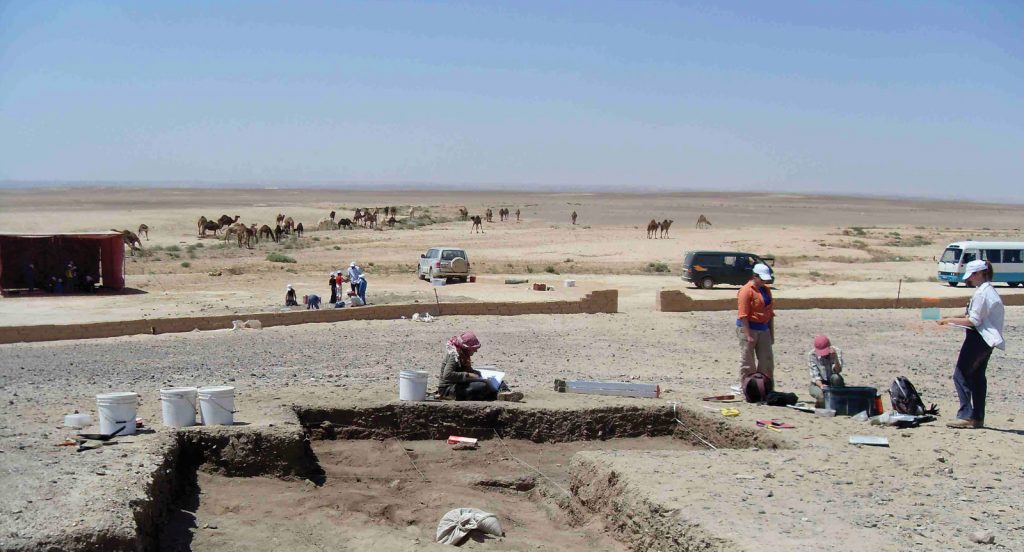


I am interested in the prehistory of South Australia especially the period of the last ice age. What are now Spencers Gulf and the Gulf of St Vincents(with present max depths of 56m and 30odd metres) , would have been dry land .Sea level at this time about 120 metres from present. I cant think how we would investigate how or if people lived here in that period.